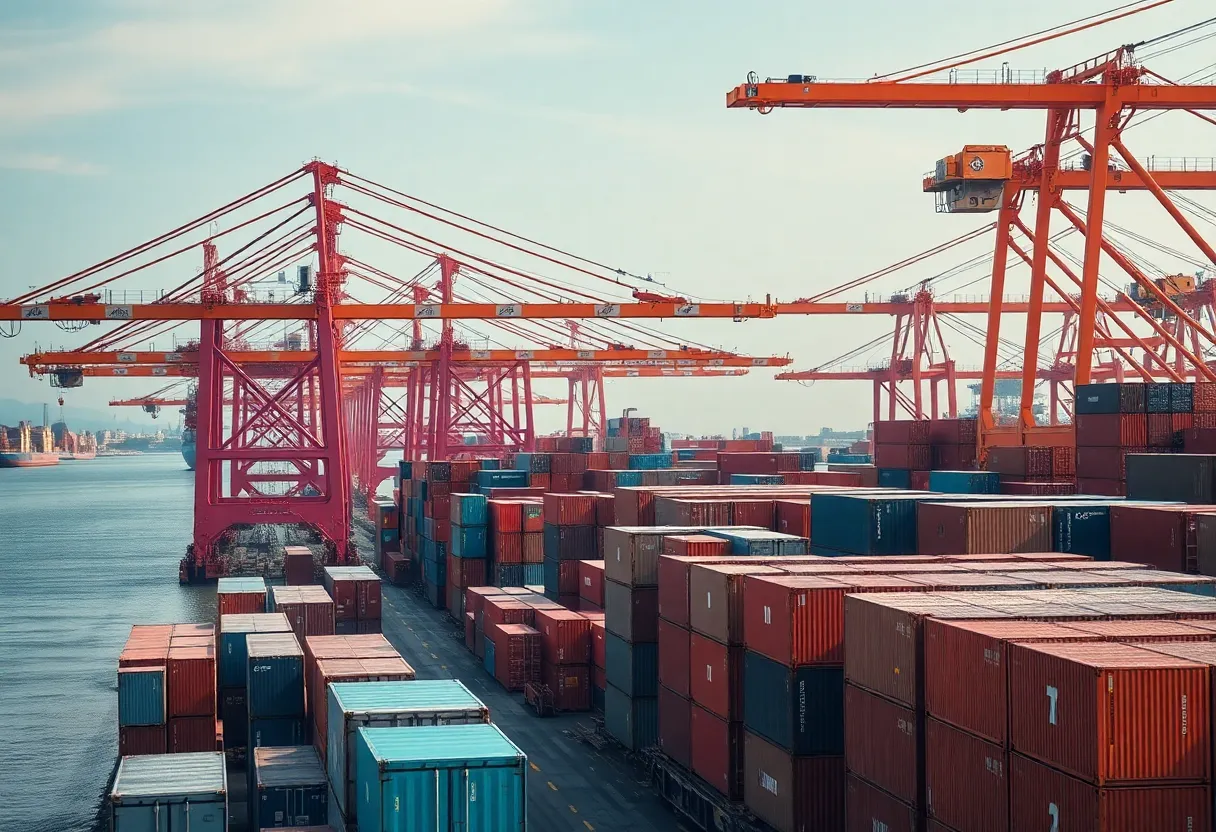News Summary
Eastbound international container volumes from Southern California have plummeted to a six-month low, reflecting the ongoing U.S.-China trade war’s impact. A 5% drop from the previous week and a 10% decrease in the four-week rolling average highlight the gravity of the situation. With steep tariffs on Chinese goods contributing to reduced imports and forecasts predicting significant declines in cargo arrivals, industries depending on this trade face uncertainty. The repercussions could lead to product shortages and heightened prices, affecting both retailers and consumers.
California – Eastbound international container volume out of Southern California has fallen to its lowest level in six months, signaling the ongoing impact of the U.S.-China trade war. During the week ending May 18, the volume dropped 5% from the previous week and 10% compared to the four-week rolling average, reflecting a significant contraction in trade activity.
This decline is largely attributed to the steep tariffs imposed on Chinese imports, with rates soaring as high as 145% on certain goods. As businesses grapple with these high costs, the volume of international containers on eastbound trains, as monitored by RailState, is currently down 26.3% from the peak week of March 3-9, 2025. That peak was largely driven by importers frontloading goods in anticipation of tariff increases.
Despite a recent 90-day truce between the U.S. and China, which saw tariffs reduced on most Chinese goods to 30%, the ripple effects of the trade war are being felt. Experts suggest that there may be a surge in imports as companies take advantage of this temporary pause to build up their inventories. However, data indicates a concerning trend for the Port of Los Angeles, which is projected to see a 35% decrease in container arrivals due to reduced cargo from China and diminished volume from Southeast Asia.
Specific forecasts for upcoming weeks show a predicted 28.6% drop in cargo to 85,486 TEUs (twenty-foot equivalent units), followed by an almost 33% decline to 74,925 TEUs. This decline in trade affects not just the port but also the trade and logistics sectors that significantly contribute to the Californian economy, with these industries accounting for nearly $300 billion in economic activity.
The recent months have brought ongoing challenges to the Port of Los Angeles, which has faced a 15% year-over-year decline in TEUs for March, marking the fourth consecutive month of decreased activity. Major retailers report maintaining only a six-to-eight-week supply of inventory, raising concerns about potential product shortages.
The trade disruption has far-reaching implications, particularly for smaller businesses. While tariffs on some goods could be reduced, the overall strain created by the trade tensions has left many retailers struggling to meet consumer demand. The consequences of these tariffs could mean price increases and decreased product availability for U.S. consumers, presenting tough choices for manufacturers and shoppers alike.
The logistics and trade industry remains a critical component of Southern California’s economy, supporting nearly 2 million jobs. However, without significant changes to existing trade policies, challenges are expected to intensify in the coming months. Experts urge stakeholders to prepare for potentially harsher conditions as the toll of tariffs weighs heavily on the market landscape.
In summary, the decline in eastbound container volumes from Southern California illustrates the complex and damaging effects of ongoing trade disputes, reflecting broader trends that could reshape trade dynamics and economic stability in the region.
Deeper Dive: News & Info About This Topic
- FreightWaves: Southern California Intermodal Volume Sees Weekly Decline
- Wikipedia: Trade War
- Trains: BNSF Sets New Container Volume Record at Southern California Ports
- Google Search: U.S.-China trade war
- Los Angeles Times: Traffic at the Port of Los Angeles Set to Plunge Amid Tariffs Disruption
- Google Scholar: U.S.-China trade impact on logistics
- FreightWaves: Plunging LA Port Volumes Trouble Truckers
- Encyclopedia Britannica: Logistics
- The Loadstar: US Ports and Intermodal Players Are Geared Up to Handle Volume Surges
- Google News: Freight volumes








